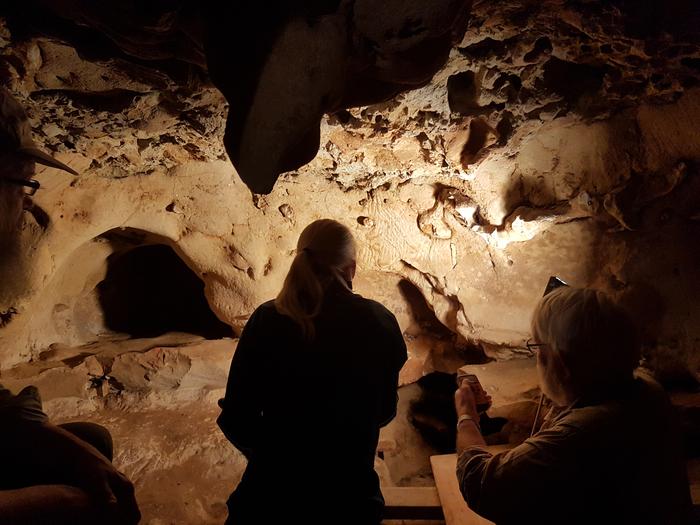
The stripes, spots, and parallel lines etched into the walls of a cave in Central France more than 57,000 years ago have been identified by researchers as the earliest record of Neanderthal art. Their meaning, however, will likely remain an enticing mystery.
The engravings, or finger flutings, that cover the soft walls of the La Roche-Cotard in the Loire Valley are the subject of a recent study published in the journal Plos One, which aims to describe the traces and prove they were made by the hands of Neanderthals. To do so, they 3D modelled the engravings (across eight separate panels) and performed an analysis of the sediment layers.
Examples of engravings discovered in the Roche-Cotard cave. Photo: courtesy Jean-Claude Marquet.
The cave is made up of four connected chambers and was discovered in 1846 when quarrying in the area stumbled upon one of the entrances. Although excavations began in the early 20th century, a thorough investigation into the chambers that reach more than 100 feet into the riverbank didn’t begin until the 1970s. The most recent research effort began in 2008 and is led by the University of Tours’ Jean-Claude Marquet.
Tools and bones were discovered in the first chamber, offering evidence that the space was used for living, and the engravings, made by pressing and dragging fingers into the clay-covered chalk wall, were found in the third chamber. The engravings vary greatly in style, some present a series of dots, another offers crooked lines that converge on a point, and one resembles a fan-like pattern.
The “Triangular Panel” on the wall of the cave. Image: Jean-Claude Marquet.
To demonstrate the engravings were made by Neanderthals, researchers analyzed the sediment that had blocked the entrance. It showed that the cave had been sealed around 57,000 years ago and homo sapiens are not believed to have reached this area of modern-day Europe until 40,000 years ago. The engravings may date as far back as 75,000 years ago.
“The anthropogenic origin of the spatially-structured, non-figurative marks found within the cave is confirmed,” lead author Jean-Claude Marquet wrote in the paper. “We conclude that the La Roche-Cotard engravings are unambiguous examples of Neanderthal abstract design.”
Science’s understanding of Neanderthals has increased greatly in recent years, dispelling long-held notions of our cousins being primitive. This has included research into the social structures of Neanderthals and the tools they used. Previous evidence of their engravings, however, is rather limited and largely confined to markings on bones that date to between 40,000 and 50,000 years ago.
More Trending Stories:
A Norwegian Dad Hiking With His Family Discovered a Rock Face Covered With Bronze Age Paintings